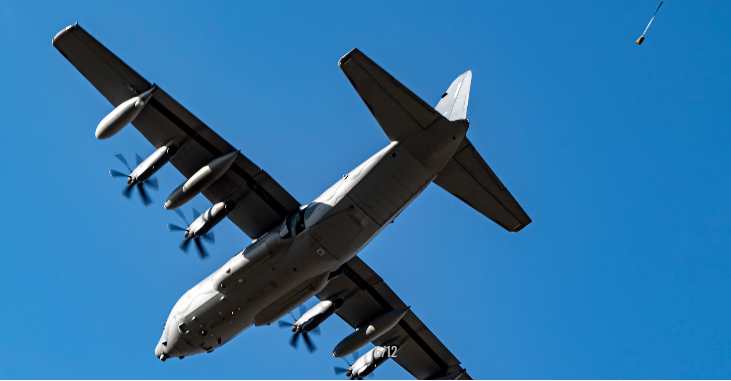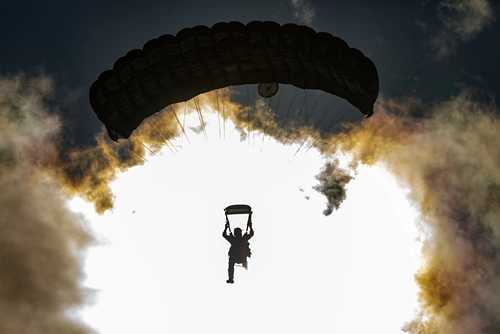JOINT BASE ELMENDORF-RICHARDSON, Alaska — Airmen of 210th Rescue Squadron delivered the first Operational Loss Replacement HH-60G Pave Hawk Aug. 5, 2019, following a four-day journey from Nellis Air Force Base, Nevada, to Joint Base Elmendorf-Richardson, Alaska.
The HH-60 is the Department of Defense’s sole combat-search-and-rescue helicopter. The OLR program will restore the Pave Hawk fleet to its authorized size, replacing aircraft lost in nearly 18 years of deployed combat operations since 9/11, including the tragic loss of a 210th RQS helicopter and all seven onboard in Iraq March 15, 2018.
Alaska Air National Guard Maj. Paul Rauenhorst, a 210th RQS instructor pilot, said the journey comprised five legs and was rather smooth despite some inclement weather between Rupert, Canada, and Sitka, Alaska.
Rauenhorst said the OLR HH-60s are based on recapitalized, low-hour U.S. Army UH-60L Black Hawks.
“It’s a much younger airframe,” he said. “These airframes are from 2001 to 2004 models, where ours sitting on the ramp are 1992 models. These are Army Limas rebuilt to be Golf models.”
[content id=”79272″]
Chief Master Sgt. Eric Chester, 176th Aircraft Maintenance Squadron superintendent, said the OLR HH-60Gs will buttress the fleet until fielding of a the all-new HH-60W Combat Rescue Helicopter, which won’t be fielded in the 210th RQS until at least 2027.
Chester said the OLRs are slightly different compared to earlier Pave Hawks because some of the helicopter’s systems are no longer made. For instance, the legacy analog intercoms system was replaced by a wireless digital version, and a newer higher-resolution display was installed for the weather radar.
Chief Master Sgt. Robert Carte, 176th Operations Group superintendent, said he expects improved flight performance from the OLRs due to lower hours and the removal of hundreds of pounds of redundant wiring from the airframe.
Rauenhorst said he noticed the performance gain almost immediately.
“It’s a nice aircraft,” the pilot said. “It flies very smooth. You can definitely tell it’s a lot newer just by the way it flies and handles.”
With fewer hours, Chester said the OLRs will require less maintenance and repairs, resulting in a significantly higher availability rate for the fleet.
“The impact of the OLR coming into our wing is huge,” he said. “It’s a big opportunity for everyone here to be able to take advantage of these new aircraft and reset across the board.”
Though ready for general service, Rauenhorst said the first OLR will need some modifications in order to be ready for Alaska’s unique conditions, including specially manufactured skis that allow the helicopters to stay afloat on marshy muskeg and deep snow.
Gaining familiarization with the OLR during the delivery journey, Rauenhorst said he will relish using the helicopter for real-world rescue missions.
“I’m looking forward to getting some skis on it and putting it through its paces,” he said.








